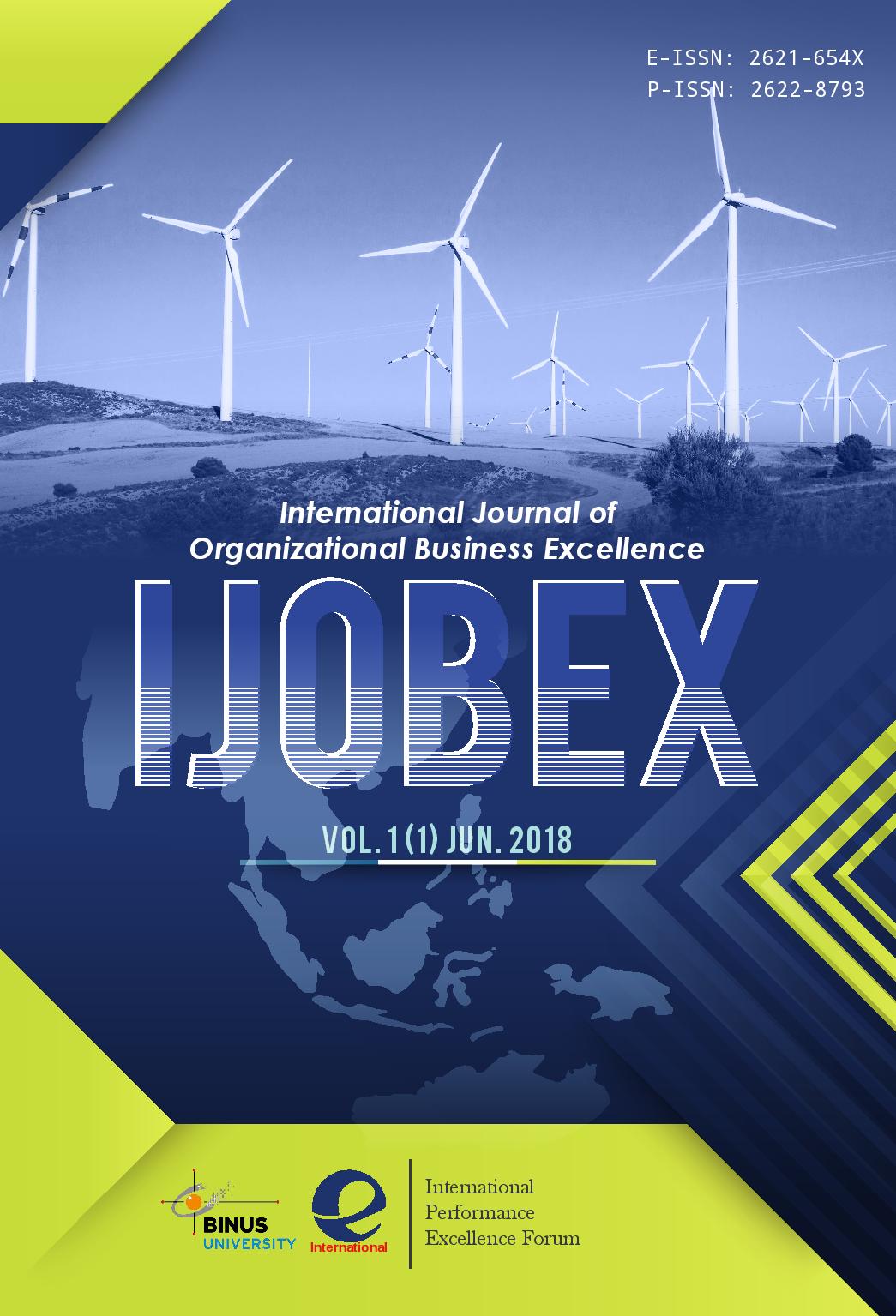Abstract
The research examines the impact of product differentiation strategies on organizational performance using MTN Nigeria Limited, Uyo, as a case study. The research design for the research is a survey. The population consists of 137 staff members of MTN, Uyo. A sample and sampling technique are used to select 103 respondents out of the population using Kracjie and Morgan's (1970) formula. The instrument used for data collection is a self-structured questionnaire. The instrument is validated by experts in testing and measurement. A Pearson Product Moment Correlation (PPMC) analysis is used to determine the reliability of the instruments. Data from completed questionnaires was subjected to descriptive analysis. The findings show and conclude that product quality differentiation is a key element of a successful business. The company adopts product differentiation strategies to deliver the best products at competitive prices to its customers. Product design differentiation plays a central role in the decision to switch to competitors. The research recommend that the strategic leadership of the organization consider adopting product differentiation, as it is the most dominant generic strategy adopted by similar organizations. The company should adopt new innovations to enhance product design to influence the firm’s competitiveness and improve organizational performance. The firm should focus on differentiating its products based on quality. A quality product leads to increased sales as well as giving the firm a competitive advantage.
References
Allen, R. S., & Helms, M. M. (2002). Employee perceptions of the relationship between strategy, rewards, and organizational performance. Journal of Business Strategies, 19(2), 119-139. https://doi.org/10.54155/jbs.19.2.115-139
Anderson, S. P., de Palma, A., & Thisse, J.-F. (1992). Discrete Choice Theory of Product Differentiation. Cambridge: The MIT Press.
Ateng, F. (2007). Challenges of strategy implementation at the ministry of finance in Kenya. [Master thesis, University Nairobi].
Chermack, T. J., Provo, J., & Danielson, M. (2005). Executing organizational strategy - A literature review and research agenda. Online Submission.
Daniel, S. J., & Reitsperger W. D. (1991). Linking quality strategy with management control systems: Empirical evidence from Japanese industry. Accounting, Organizations and Society, 16(7), 601-618. https://doi.org/10.1016/0361-3682(91)90015-7
Dirisu, J. I., Oluwole, I., & Ibidunni, O, S. (2013). Product Differentiation: A tool of competitive advantage and optimal organizational performance (A study of Unilever Nigeria PLC). European Scientific Journal, 9(34), 258-281.
Ertekin, M. & Aydin, B. (2010). The impact of national identity and culture on customer perception of product quality; The case of mobile phones in Sweden and Turkey. [Master thesis, Mälardalen University Västerås, Sweden].
Fahy, J. (2000). The resource-based view of the firm: Some stumbling blocks on the road to understanding sustainable competitive advantage. Journal of European Industrial Training, 24(2/3/4), 94–104. https://doi.org/10.1108/03090590010321061
Flatt, S. J., & Kowalczyk, S. J. (2008). Creating a competitive advantage through intangible assets: The direct and indirect effects of corporate culture and reputation. Advances in Competitive Research, 16(1/2), 13-30.
Ittner, C. D., & Larcker, D. F. (2015). Product development cycle time and organizational performance. Journal of Marketing Research, 34(1), 13-23. https://doi.org/10.1177/002224379703400102
Kanno, Y., & Shibata, S. (2013). Organizational factors in the product design development process. International Journal of Business and Management, 8(10), 15-26. http://dx.doi.org/10.5539/ijbm.v8n10p15
Kotler, P. & Keller, K. (2011). A Framework for Marketing Management (4th Ed.). London: Pearson Education, Inc.
Matsa, D. A. (2009). Competition and product quality in the supermarket industry. Quarterly Journal of Economics, Forthcoming. https://dx.doi.org/10.2139/ssrn.1440414
Mbwaya, E. L. (2012). Strategic management practices at Barclays bank of Kenya [Master of Business Administration (MBA) thesis, University Of Nairobi).
Mosakowski, E. (1993). A resource-based perspective in the dynamic strategy–performance relationship: an empirical examination of the focus and differentiation strategies in entrepreneurial firms. Journal of Management, 19(1), 819–839. https://doi.org/10.1016/0149-2063(93)90029-M
Okumus, F. (2003). A framework to implement strategies in organizations. Management Decision, 41(9), 871-882. https://doi.org/10.1108/00251740310499555
Pearce II, J. A., & Robbins, D. K. (2007). Strategic transformation as the essential last step in the process of business turnaround. Business Horizons, 51(2), 121-130. https://doi.org/10.1016/j.bushor.2007.11.003
Plett, H. F. (2004). Rhetoric and Renaissance Culture. Berlin/New York: Walter de Gruyter.
Porter, M. E. (1985). Competitive Advantage: Creating and Sustaining Superior Performance. New York: Free Press.
Prajogo, D. I. (2007). The relationship between competitive strategies and product quality. Industrial Management and Data Systems, 107(1), 69-83. http://dx.doi.org/10.1108/02635570710719061
Ng, Y. N., & Rahman, M. (2011). Differentiation of services to achieve competitive advantage: Airlines meeting the needs of the physically challenged persons.
Nolega, K. S., Oloko, M., William, S., & Oteki, E. B. (2015). Effects of product differentiation strategies on firm product performance: A case of Kenya Seed Company (KSC), Kitale. International Journal of Novel Research in Marketing Management and Economics, 2(3), 100-110.
Reynolds, R. L. (2005) Basic micro economics: An outline. Alternative Microeconomics Part II.
Shammot, M. M. (2011). Quality management practices and their impact on organizational performance, and customer behavior. European Journal of Economics, Finance and Administrative Sciences, (34), 152-161.
Snyman, R., & Kruger, C. J. (2004). The interdependency between strategic management and strategic knowledge management. Journal of Knowledge Management, 8(1), 5-19.
Strandholm, K., & Kumar, K. (2003). Differences in environmental scanning activities between large and small organizations: The advantage of size. Journal of American Academy of Business, 3(1/2), 416-421.
Sumutka, A., & Neve B. (2011). Quality as a Competitive Advantage
Tidd, J., & Bessant, J. (2015). Innovation and Entrepreneurship (3rd Ed.). Wiley.
Vorhies, D. W., & Morgan, N. A. (2005). Benchmarking marketing capabilities for sustainable competitive advantage. Journal of Marketing, 69(1), 80-94. https://doi.org/10.1509/jmkg.69.1.80.55505
Wang, Y., & Lo, H. (2003). Customer-focused performance and the dynamic model for competence building and leveraging: A resource-based view. Journal of Management Development, 22(6), 483–526. http://dx.doi.org/10.1108/02621710310478486

This work is licensed under a Creative Commons Attribution-NonCommercial-ShareAlike 4.0 International License.

